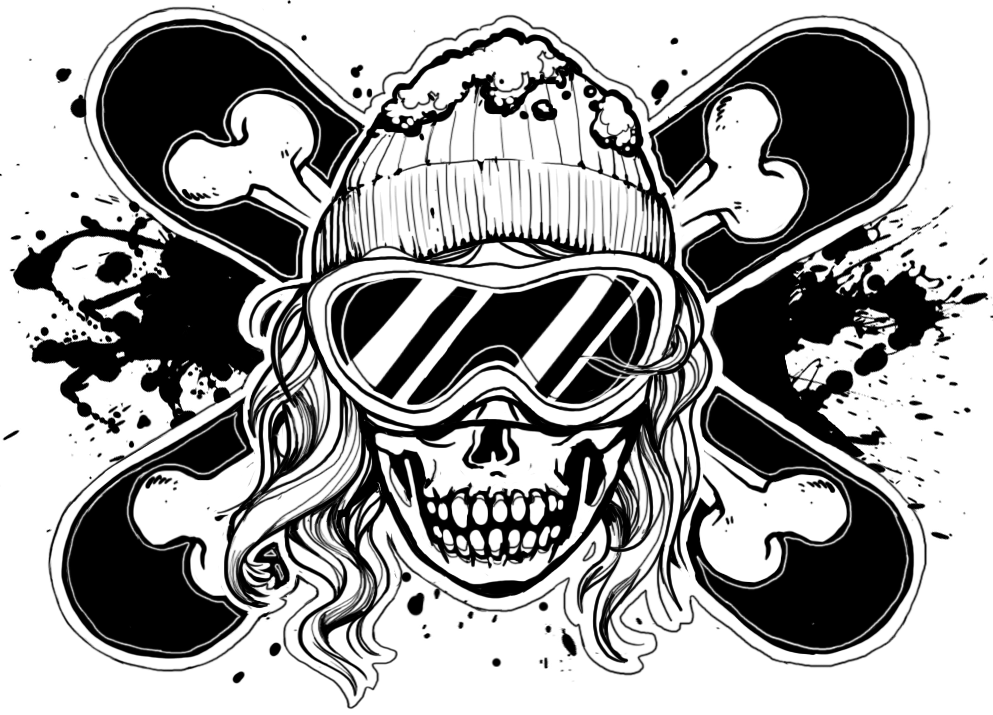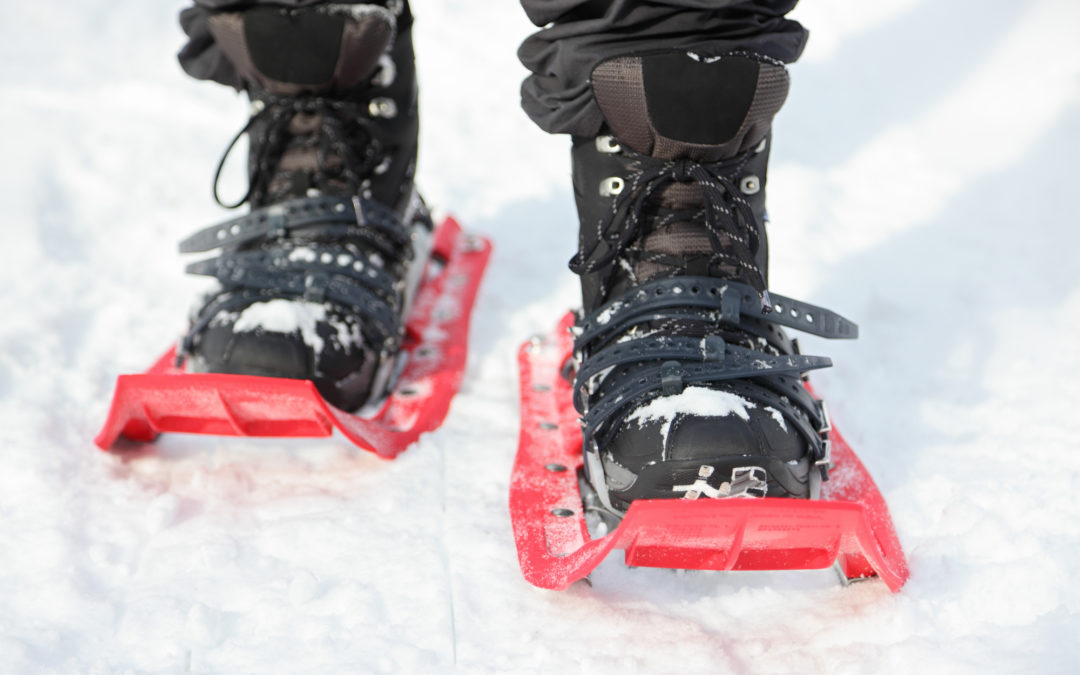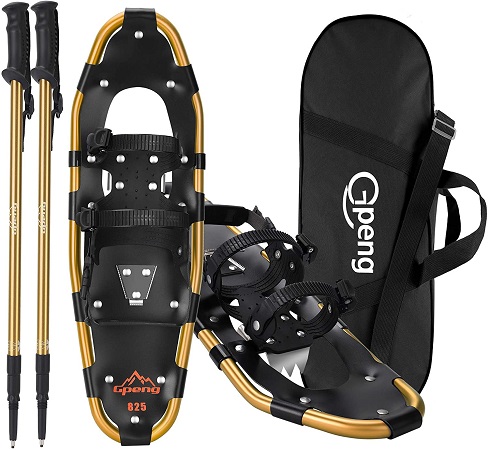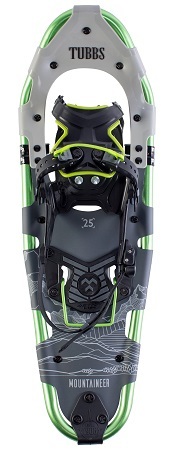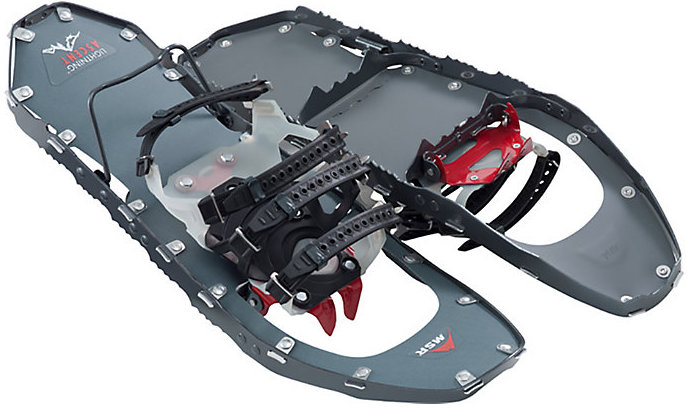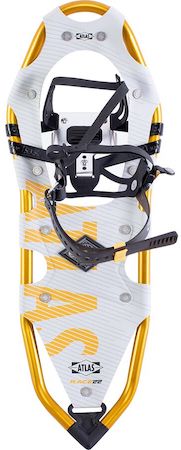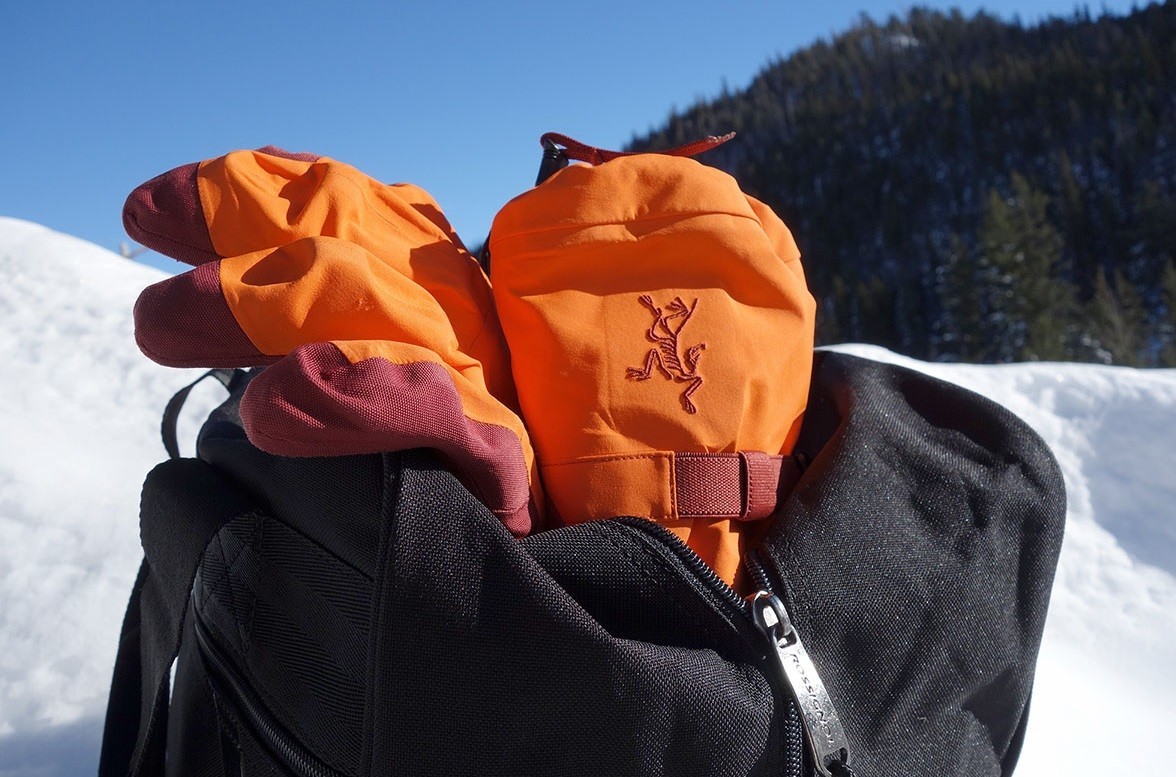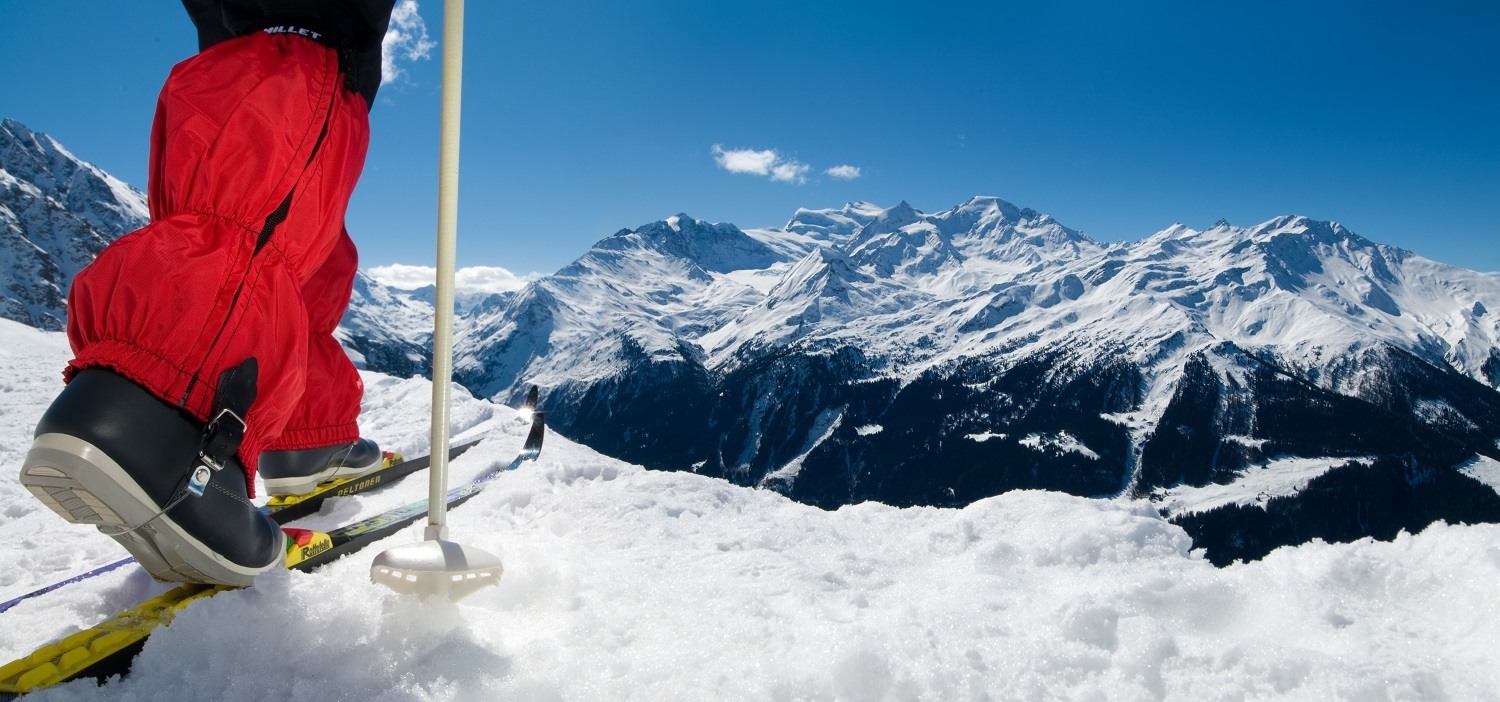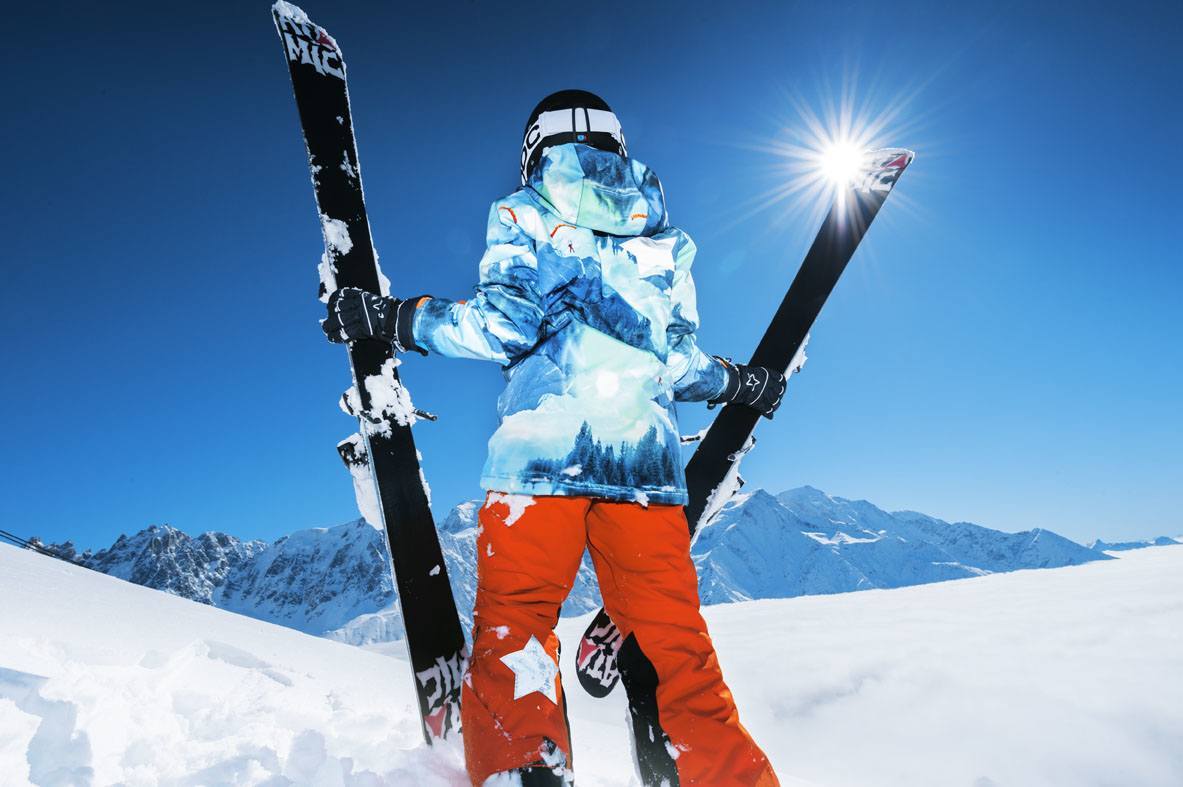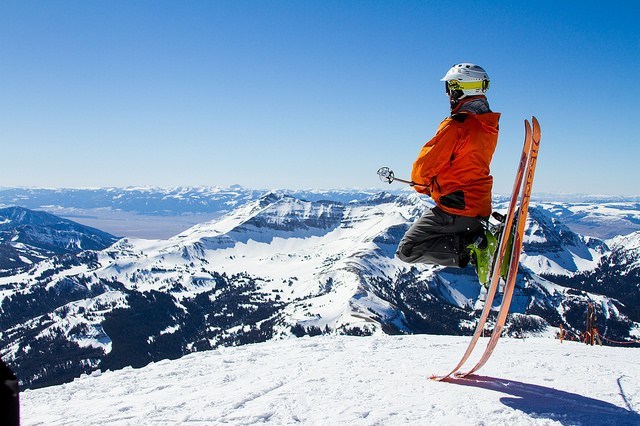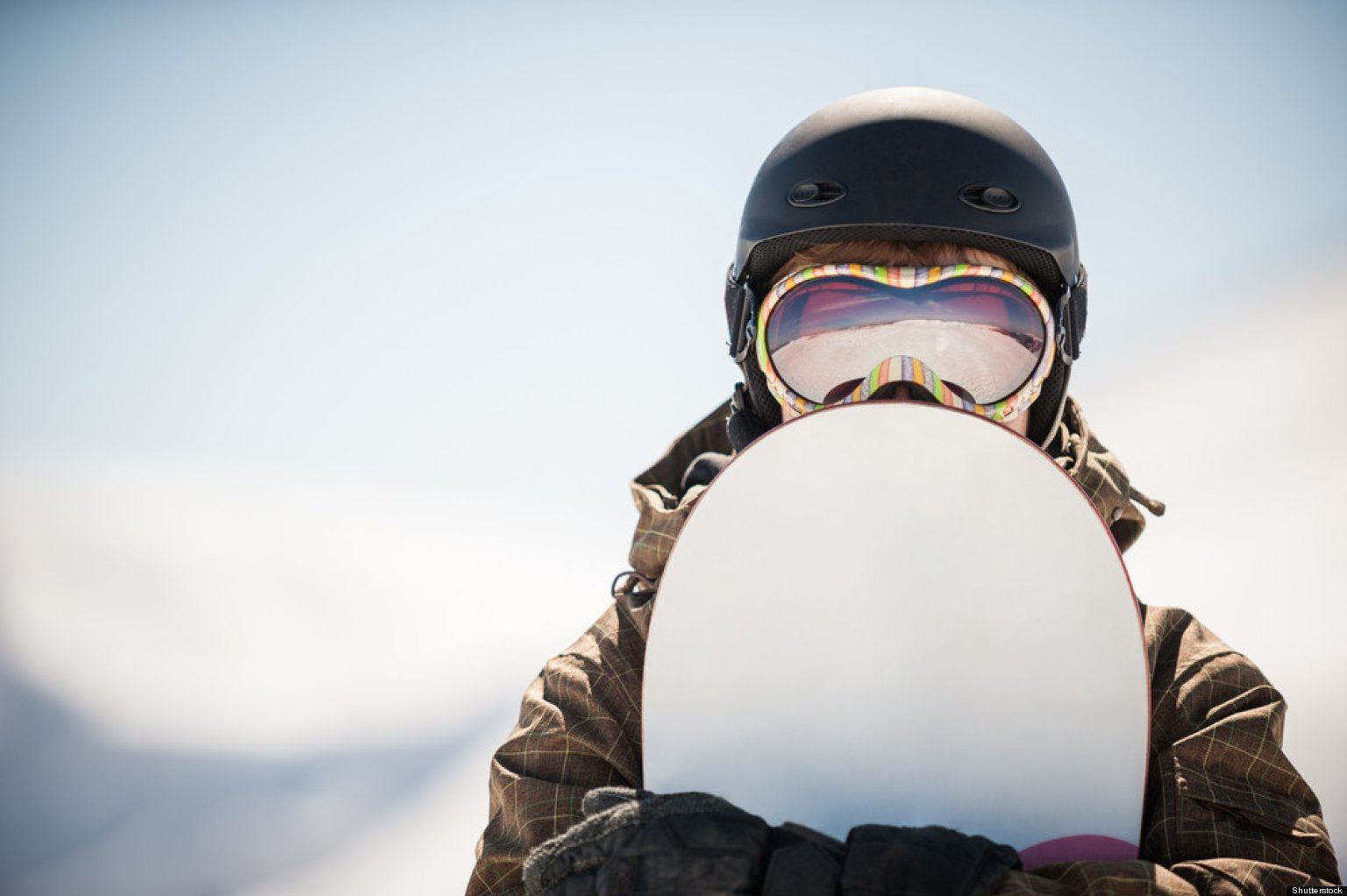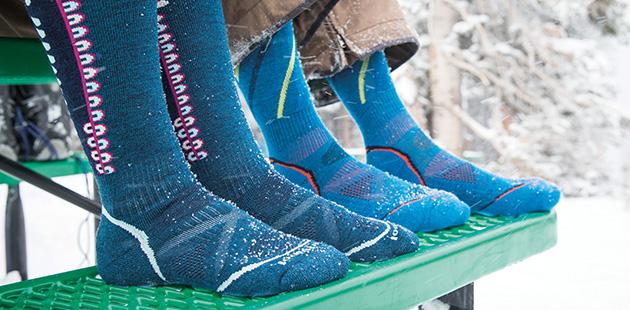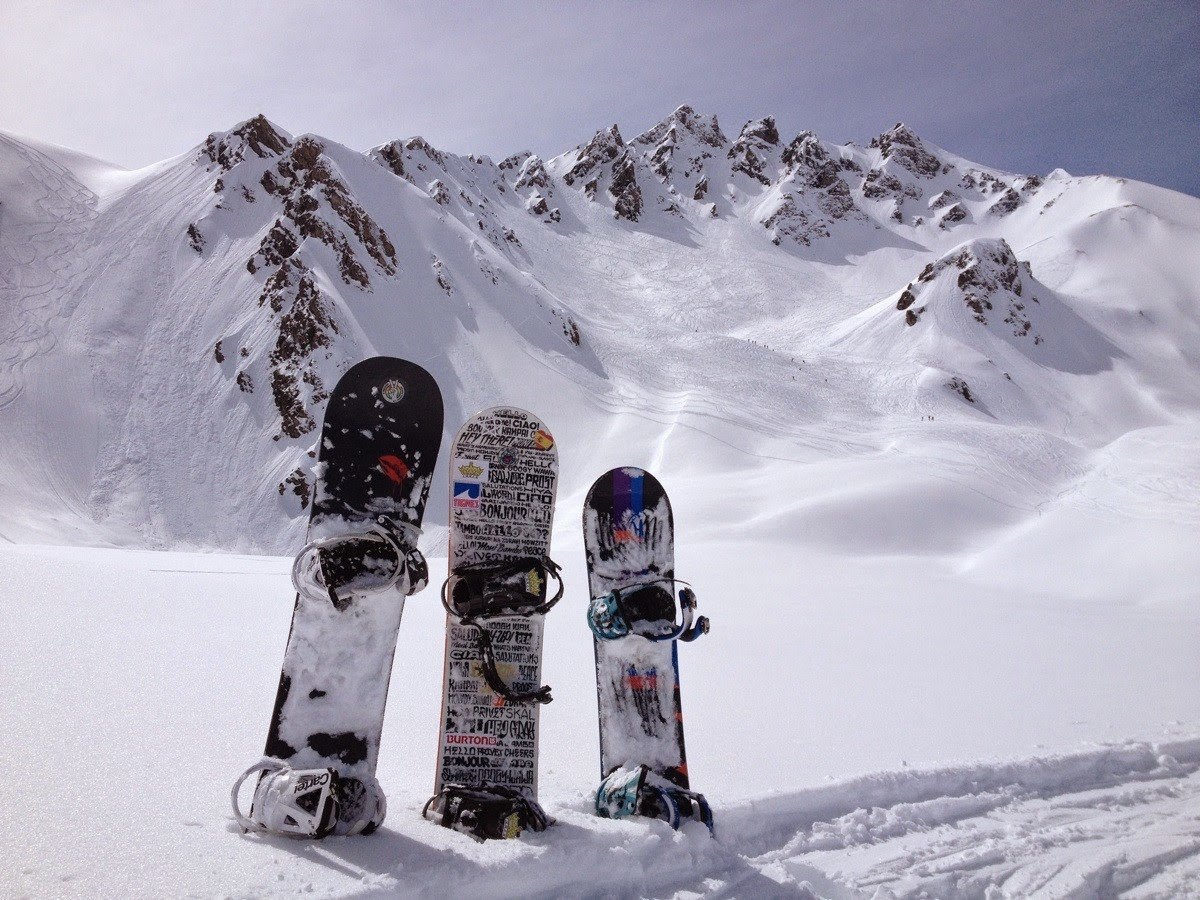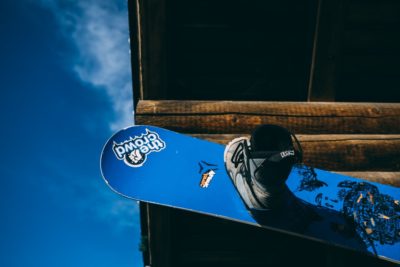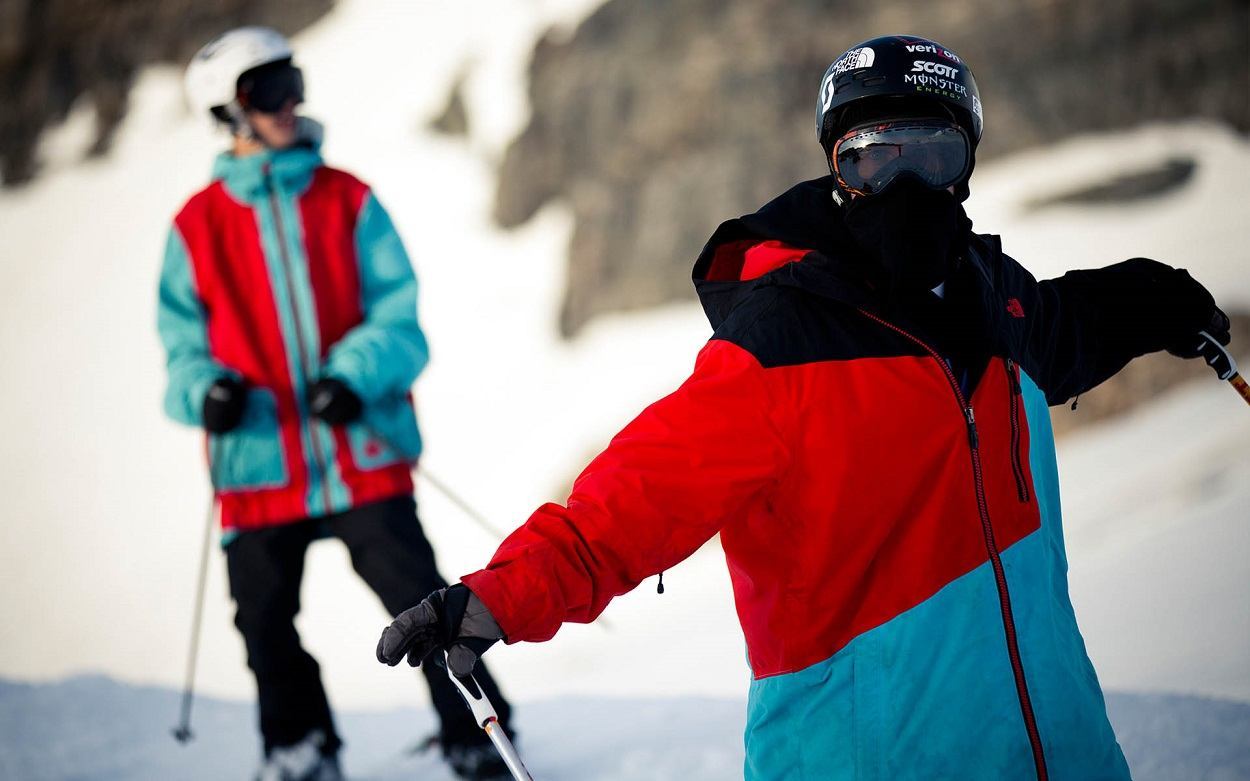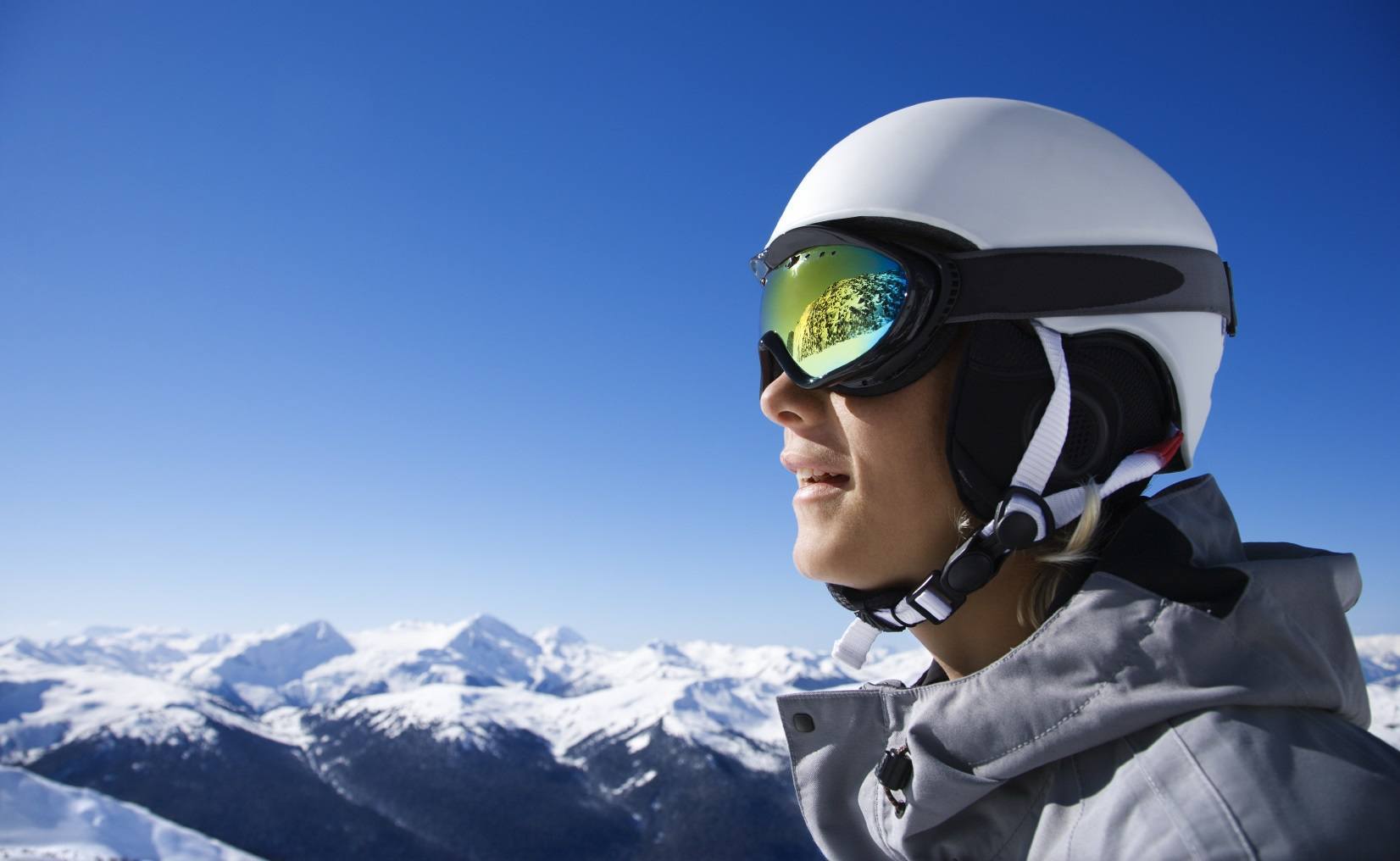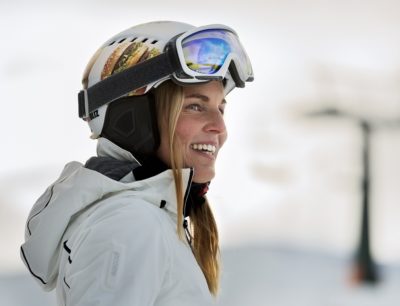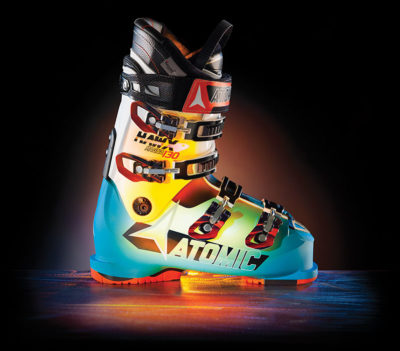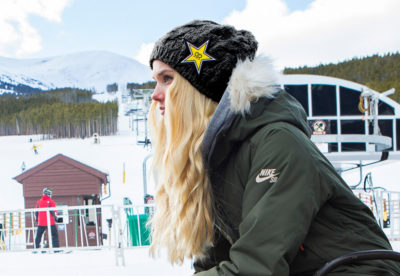With over 3.5 million people snowshoeing, isn’t it time you give it a try? Throwing on a pair of snowshoes gives you the ability to get out and about during the long winter months. You can start out easy with flat terrain and work your way up to the more aggressive rolling and then mountain terrains. Whatever your level of activity, it’s important to consider your weight and snow type when considering the best snowshoes.
5 Best Snowshoes for the 2020-2021 Season
Once you decide your experience level and size, it’s time to start looking at some snowshoe reviews.
1. Gpeng 3-in-1 Xtreme Lightweight Terrain SnowshoesBest Snowshoes for Beginners
These snowshoes are our pick for the best snowshoes for beginners. Gpeng really nailed things in terms of value, and they als offer this model in a wide variety of sizes for all hikers including men, women, youth, and kids sizes. They are fashionable and functional with a stylish red, blue, or gold color scheme and an ergonomic design.
The slightly upturned rounded tail creates an easier and more natural walking stride. The metal frame and PE decking provide the maximum amount of flotation. Quick-release buckles are used for the binding. Aluminum alloy is used for the crampons to give you the maximum amount of traction.
2. Tubbs Mountaineer Backcountry SnowshoesBest Snowshoes for Backcountry
These snowshoes from Tubbs feature their R2 Revolution Response articulation, helping your feet maintain a natural position, even in steep sidehill situations. You’ll be able to easily operate the freeze-resistant, ratchet-style bindings, even with your gloves on. Thanks to Tubbs’ ActiveFit 2.0 Bindings, these are easily one of the best snowshoes for hiking steeper terrain currently available. They are ergonomically designed for comfortable and easy walking when your done climbing peaks for the day.
The heel crampons are heavy-duty aluminum and rotate to grip the snow thanks to the R2 articulation we mentioned earlier. You will have an excellent amount of traction traversing slopes. A carrying bag also comes with them for easy transport. Keep in mind, these snowshoes are intended for intermediate to advanced users only.
3. MSR Women’s Lightning Ascent SnowshoesBest Snowshoes for Women
The MSR Lightning Ascent Snowshoes tick every single box when you’re on the hunt for a versatile, quality pair of snowshoes for women. Their red and gunmetal look stand out immediately and you can easily tell they mean business. MSR’s Ergo Televator tech helps with an extra heel lift for steep terrain that’ll get you up the mountain that much easier. With a simple flick of a walking pole, they activate and you’re off to the races.
They are made of a strong yet lightweight aluminum frame, some steel parts, and PTU decking. The steel DTX crampons and 360-degree traction frames will give you superior control in most any winter conditions. Plus, these have optional five-inch tails that can be activated on-demand for extra flotation when you’re carrying a heavy load or stomping through extra deep powder. This unique construction makes them one of the best snowshoes for deep snow.
4. Wildhorn Sawtooth SnowshoesBest Snowshoes for the Money
While the Wildhorn Sawtooth can technically be worn by men or women and their “Aurora” color style is our pick for best women’s snowshoes. The optimal weight range for users is between 80 and 160 pounds. The bindings feature ratcheting and quick-release buckles for a truly custom fit. The frame is aluminum for maximum flotation.
The bottoms of each shoe have two sets of reinforced heavy-duty crampons. Your body weight will engage the hard pack teeth to work as highly functional ice picks on your feet. The shoes also come with heel risers for steep climbing with ease. The boot pad features a no-slip textured pad for maximum grip and traction. Because of this excellent slew of features for the price, they landed as the best budget snowshoes in our list.
5. MSR Evo 22 SnowshoeBest Snowshoes for Running
Featuring Atlas’ Lightspeed bindings, these snowshoes are built for the trail and sprinting. While they don’t have heel lifts, they do have spring-loaded suspension that optimizes energy return. The unique aluminum V-shape is great for full strides and offers competitors a high amount of grip on modest slopes and rugged trails. The frame and crampons are steel and the decking is constructed with Nytex nylon.
Types of Snowshoes
When shopping for snowshoes, you will find that they fall into three main categories, flat, rolling terrain, and mountain. There is a smaller fourth category of snowshoe that is specifically for trail running and fitness.
Flat Terrain Snowshoes
These are the best snowshoes for those who are starting out. They are designed for easy walking ability on flat or rolling surfaces. If you are a casual walker or looking to walk with your family then consider this style. You will find they are easy to adjust, have less aggressive traction, and a good value.
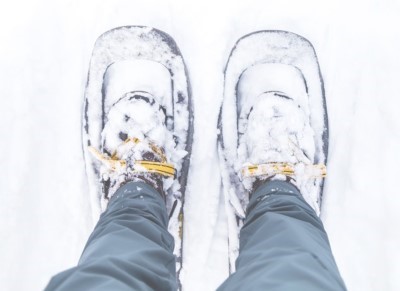
Rolling Terrain Snowshoes
If you are looking to hike or backpack you’ll want the increased traction and stronger bindings. This way you’ll be able to handle the steep terrain and icy conditions. This category of snowshoes is a step above the entry-level flat shoes. The sportier design will give you the durability you need for going off the beaten track.
Mountain Terrain Snowshoes
If you are an advanced hiker looking to go into the mountains or backcountry this is the category of snowshoe for you. They are specifically designed for icy and steep terrain. The crampons are more of a climbing style. The bindings are more rugged to withstand greater abuse.
Other Features to Consider
Here are a few other things to look out for before shopping! Remember, that the best snowshoe brands should offer high-quality snowshoes in a range of different types, with a plethora of features.
Snowshoe Sizing
Getting the right size snowshoe is key to getting the right amount of floatation on top of the snow. As a general rule, the heavier the person or the lighter and drier the snow, the bigger the snowshoe needs to be.
Snowshoe Frames and Decking
Aluminum is the material of choice for most snowshoes. This is because it is a lightweight metal resistant to corrosion. The deck of the snowshoe is usually nylon or rubber. This allows the deck to be lightweight and responsive.
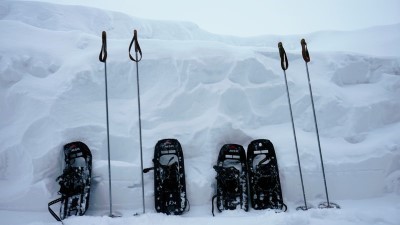
Snowshoe Bindings
There are two types of bindings that will secure your snowshoes to your boots. The rotating or floating binding has a pivot point under the balls of your feet. A fixed binding is connected with a heavy rubber band. This style doesn’t allow for much pivot as you walk.
The floating bindings allow for snow shedding off the tail of the shoes which reduces leg fatigue. The fixed bindings allow for better maneuvering over obstacles.
Snowshoe Traction Devices
Your own body weight is the first line of defense when it comes to gaining traction. To supplement this there are devices called crampons on the underside. The crampons are located at the heel and toe and fill with snow to slow you down as you descend from your hike. They are typically in a V formation for maximum effectiveness.
Braking bars are also located on the underside to prevent you from backsliding. Heel lifts are wire bars that can be used to reduce calf strain on steep mountains.
The Ideal Footwear
Snowshoes are pretty forgiving when it comes to the footwear they attach to. You can wear anything from hiking boots to snowboard boots. Just be sure that the boots you wear are warm with warm and dry socks on in them. You also want stiff sides for strong ankle support. Stay warm on your next hike with the best winter hats to match the best snowshoes for your adventure.
